Carson City, NV Pollen and Allergy Report for Summer 2023
Pollen Allergy Trends in Carson City, NV
When is pollen lowest in Carson City, NV?

February
Lowest month total PPM
Avg. PPM
When is pollen highest in Carson City, NV?

March
Highest month total PPM
Avg. PPM
How does pollen in Carson City, NV compare to Nevada?
Carson City has a lower average PPM than the state of Nevada.
Carson City yearly avg PPM:
Nevada yearly avg PPM:
How does pollen in Carson City, NV compare to the USA?
Carson City has a lower average PPM than the USA.
Carson City yearly avg PPM:
USA yearly avg PPM:
Is pollen worse this year in Carson City, NV?
Spring 2023 was better than spring 2022.
Spring 2023 PPM:
Spring 2022 PPM:
Average PPM in Carson City, NV
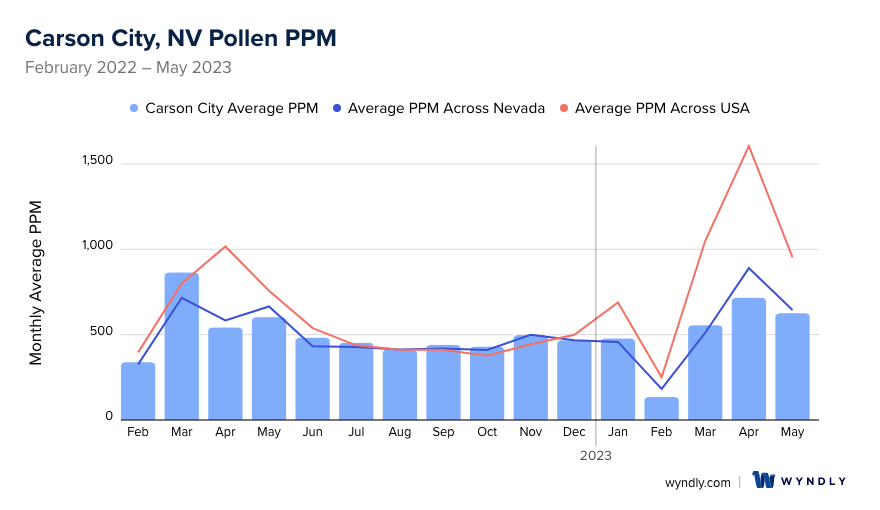
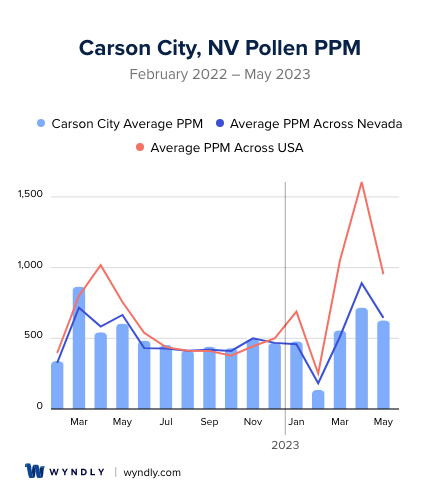
Carson City, NV Pollen and Allergy Breakdown by Month
Grass
When is grass pollen highest in Carson City, NV?
May has the highest grass pollen in Carson City, NV with an average PPM of
When is grass pollen lowest in Carson City, NV?
December has the lowest grass pollen in Carson City, NV with an average PPM of
Tree
When is tree pollen highest in Carson City, NV?
March has the highest tree pollen in Carson City, NV with an average PPM of
When is tree pollen lowest in Carson City, NV?
August has the lowest tree pollen in Carson City, NV with an average PPM of
Weed
When is weed pollen highest in Carson City, NV?
November has the highest weed pollen in Carson City, NV with an average PPM of
When is weed pollen lowest in Carson City, NV?
February has the lowest weed pollen in Carson City, NV with an average PPM of
Carson City, NV Pollen Monthly Breakdown by Pollen Type
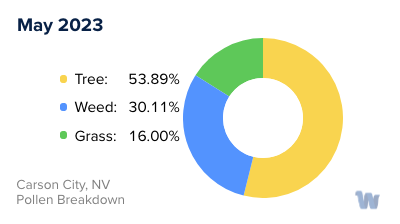
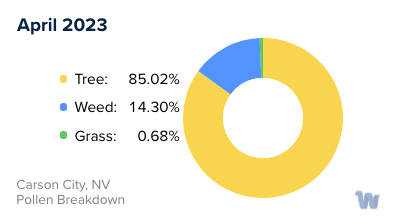
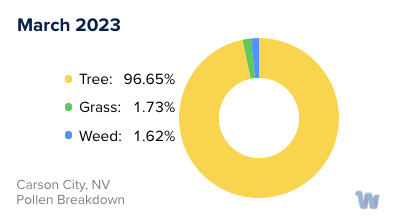
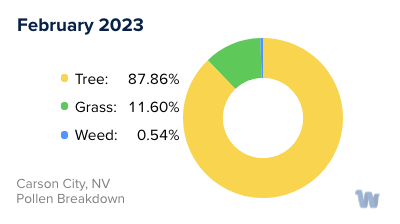
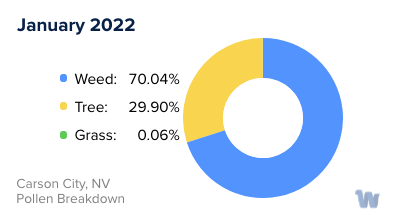
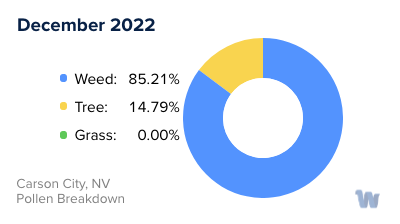
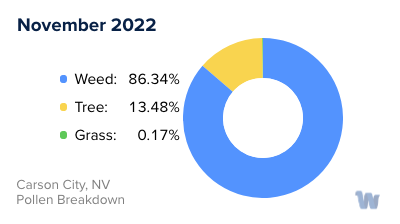
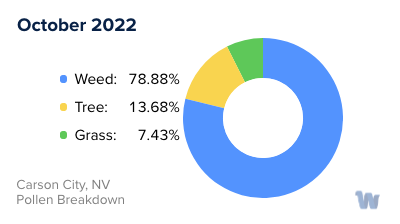
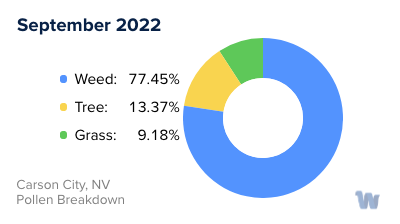
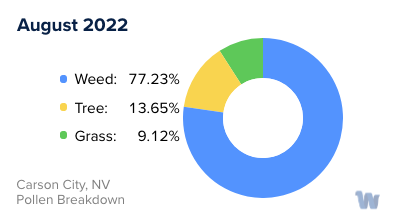
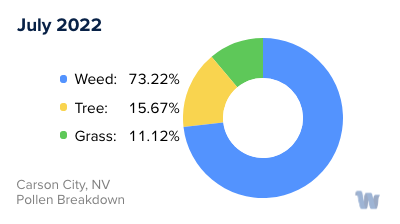
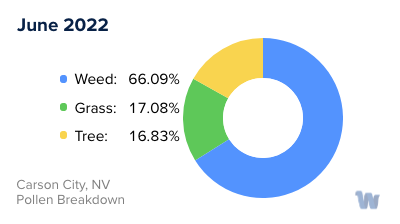
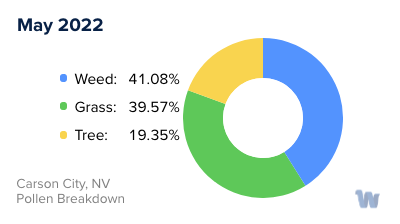
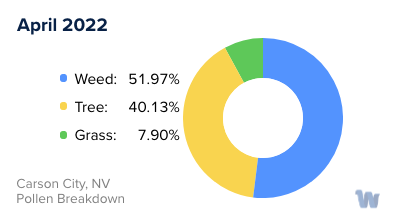


Pollen and Hay Fever in Carson City, NV
Pollen allergies, often associated with hay fever, can be a significant issue for residents in Carson City, Nevada. As residents may already know, certain types of pollen are more prevalent than others, and these types can often be the cause of aggravated allergy symptoms. The three main types of pollen that residents should be aware of are tree pollen, grass pollen, and ragweed pollen.
Tree pollen is typically the first to appear in the year, and is often high during spring months. Various species of trees common to Carson City, such as Cottonwoods, Birch, Juniper, and Maple, are known to produce significant amounts of pollen, which can trigger allergic reactions in sensitive individuals.
Following tree pollen season, grass pollen becomes a primary concern. During late spring and early summer, grasses such as Alfalfa, and weeds such as Russian thistle (tumbleweed) and Pigweed, begin to release their pollen. This can lead to another wave of allergy symptoms among susceptible residents.
As we approach late summer and into the fall, ragweed pollen becomes prevalent. Ragweed, along with other plants like Sagebrush, Nevada's state flower, and Rabbitbrush, can produce pollen that leads to a third wave of allergy symptoms, rounding out a significant portion of the year.
In fact, due to increasing temperatures and extended spring and summer seasons as a result of climate change, the allergy season in Carson City can now run from February through November, a longer period than in previous years. This extended season means that residents may experience allergy symptoms for a significant portion of the year, depending on which types of pollen they are sensitive to.
By understanding the types of pollen present and their associated seasons, residents can better anticipate when their symptoms might be aggravated and plan their outdoor activities accordingly. Whether it's tree, grass, or ragweed pollen, each season brings its own challenges to those with allergies in Carson City.

